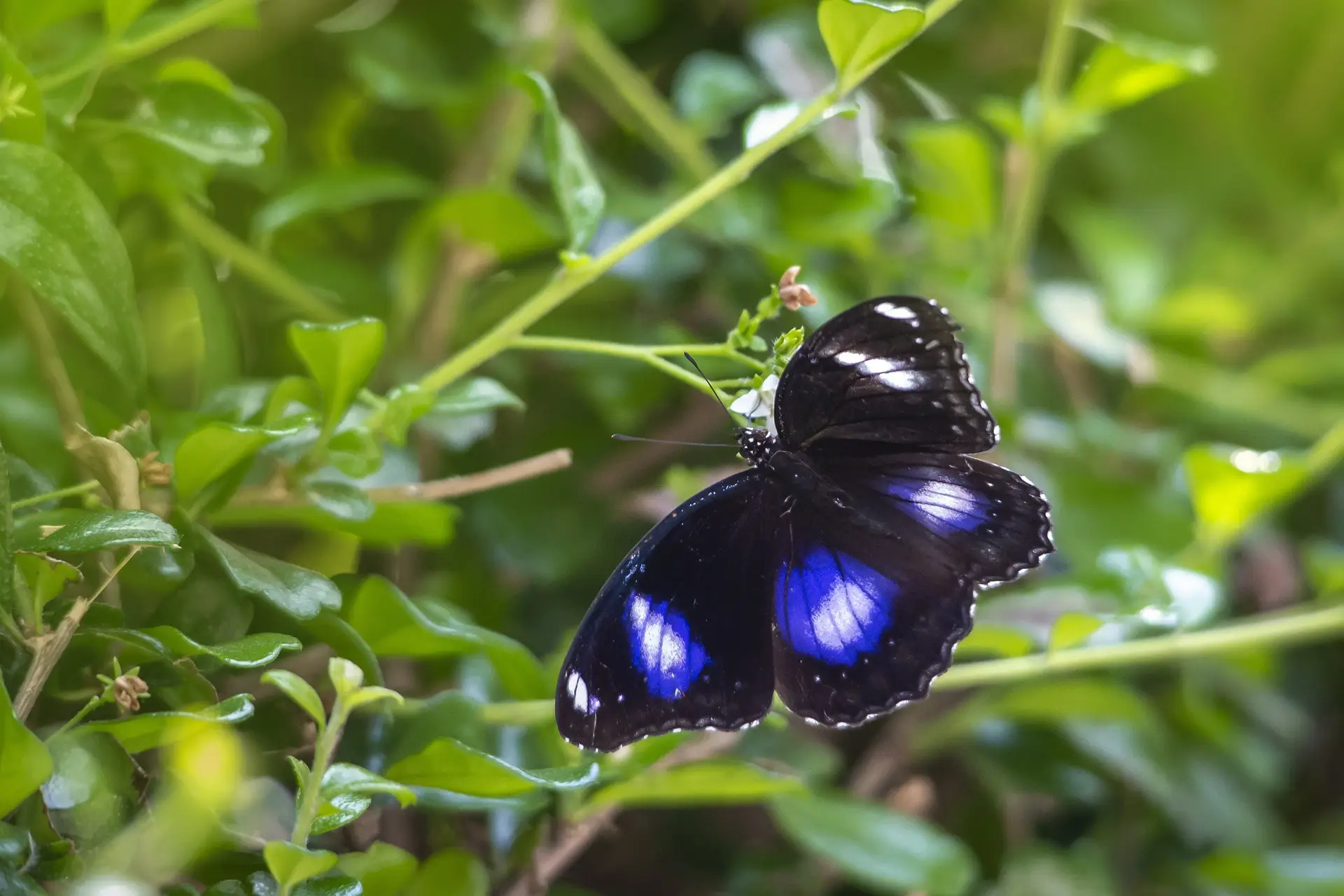The Blue Moon Butterfly (Hypolimnas bolina), also known as the Great Eggfly, is a striking butterfly species in the family Nymphalidae. It is renowned for its dramatic coloration and sexual dimorphism, where males and females have markedly different appearances. Here’s an overview of the Blue Moon Butterfly:
Appearance:
- Wingspan: The Blue Moon Butterfly has a wingspan ranging from 70 to 85 millimeters.
- Coloration:
- Male: The male is particularly eye-catching with its dark brown to black upper wings adorned with three prominent white spots on each forewing and a stunning iridescent blue to purple sheen around these spots. The hindwings also have a blue to purple sheen with white spots.
- Female: The female is more subdued in color, typically brown with lighter patterns that can include white, yellow, or orange spots and bands on both the forewings and hindwings. The females do not have the iridescent blue sheen seen in males.
- Underside: The underside of both sexes is brown with white, yellow, or orange spots, providing effective camouflage when the butterfly is at rest.
Habitat:
- Preferred Habitats: The Blue Moon Butterfly is found in a variety of habitats, including tropical and subtropical forests, gardens, parks, and agricultural areas. They thrive in places with abundant vegetation and food sources.
- Geographic Range: This species is widely distributed across Asia, Australia, and the Pacific Islands, including countries like India, Southeast Asia, the Philippines, and parts of Oceania.
Behavior:
- Feeding: Adults feed on nectar from a wide range of flowering plants, including Lantana, Ixora, and various other garden flowers. They also feed on rotting fruits and tree sap.
- Territorial Behavior: Males are highly territorial and often engage in aerial battles with rivals to defend their territories.
- Flight Pattern: The Blue Moon Butterfly has a strong and fast flight, often seen patrolling its territory or visiting flowers.
Life Cycle:
- Eggs: Eggs are laid singly or in small clusters on the leaves of host plants, including those from the Acanthaceae, Malvaceae, and Portulacaceae families.
- Larvae (Caterpillars): The caterpillars are black with white and orange markings and covered in spines. They feed on the leaves of host plants.
- Pupae: The pupae are mottled brown and well-camouflaged, resembling dried leaves or twigs.
- Adults: After emerging from the pupae, adults focus on feeding, mating, and laying eggs to continue the life cycle.
Ecological Role:
- Pollination: As nectar feeders, Blue Moon Butterflies contribute to the pollination of many flowering plants.
- Food Source: They play a role in the food web, serving as prey for birds, spiders, and other predators.
Conservation Status:
- Population: The Blue Moon Butterfly is not currently considered threatened and generally has stable populations in most of its range. It is commonly found in suitable habitats.
- Threats: Habitat destruction and pesticide use can negatively impact local populations, although the species shows a degree of adaptability.
Interesting Facts:
- Mimicry and Defense: The iridescent blue spots on males can startle and confuse predators, aiding in their defense.
- Wolbachia Infection: Populations of Blue Moon Butterflies on some Pacific Islands were significantly affected by a bacterial infection (Wolbachia) that killed male larvae. However, some populations have evolved resistance to this infection.
Identification Tips:
- Iridescent Blue Spots: The iridescent blue spots on the upper wings of males are a key identifying feature.
- Sexual Dimorphism: The marked difference in appearance between males and females can help in identifying the species.
- Territorial Behavior: Observing the territorial behavior of males can also aid in identification.
In summary, the Blue Moon Butterfly (Hypolimnas bolina) is a visually stunning and ecologically important species found across Asia, Australia, and the Pacific Islands. Its dramatic sexual dimorphism, striking coloration, and interesting behaviors make it a notable species within its range.
Visited 930 times, 6 visit(s) today
Views: 1555
Subscribe to the newsletter:
